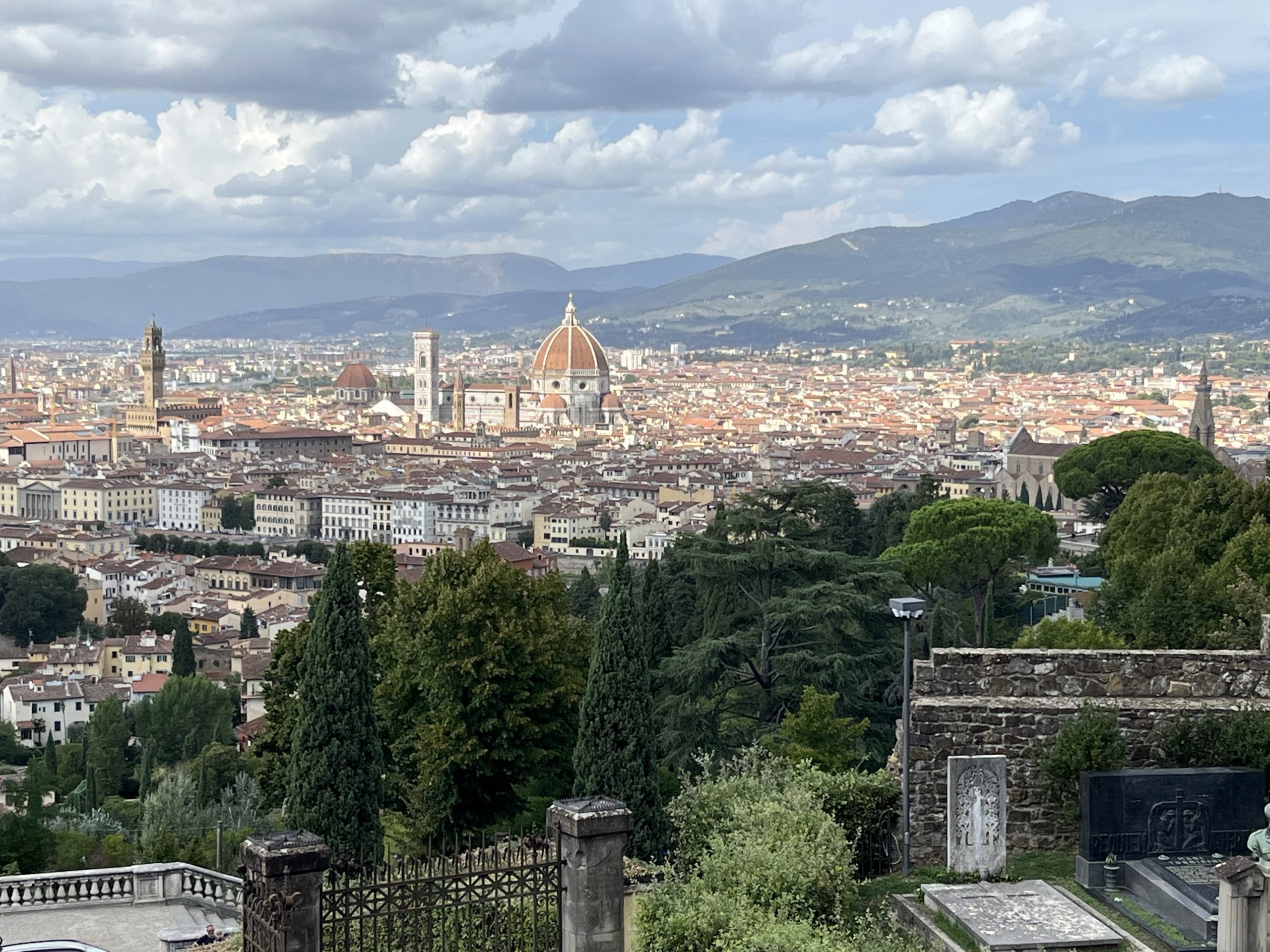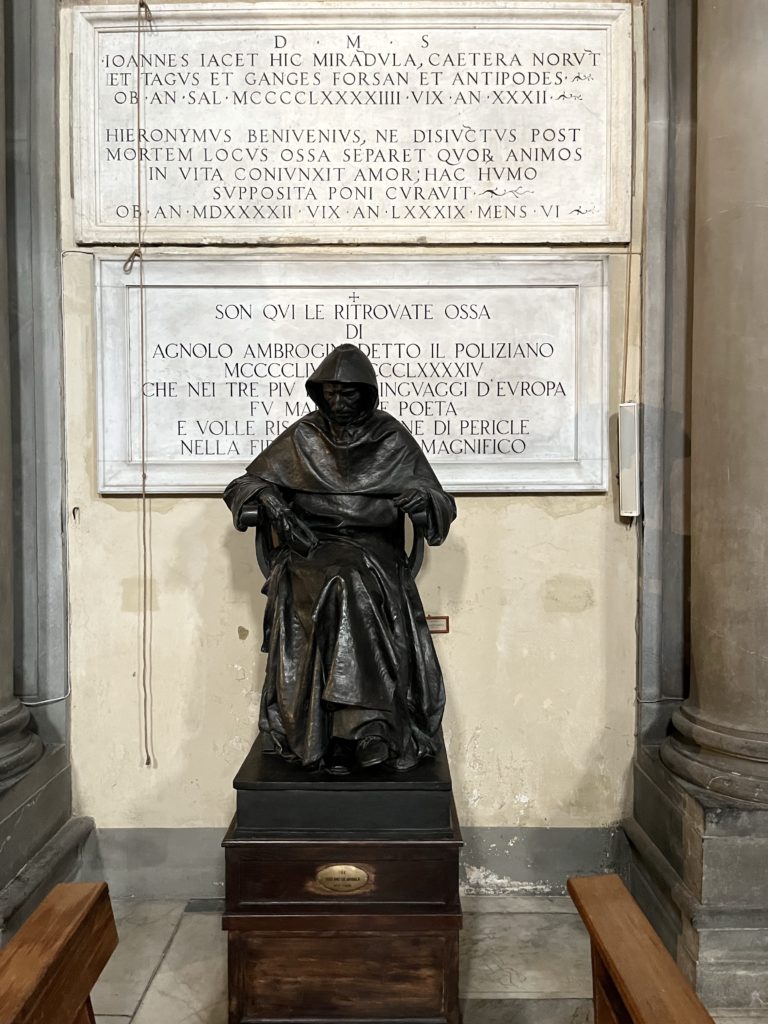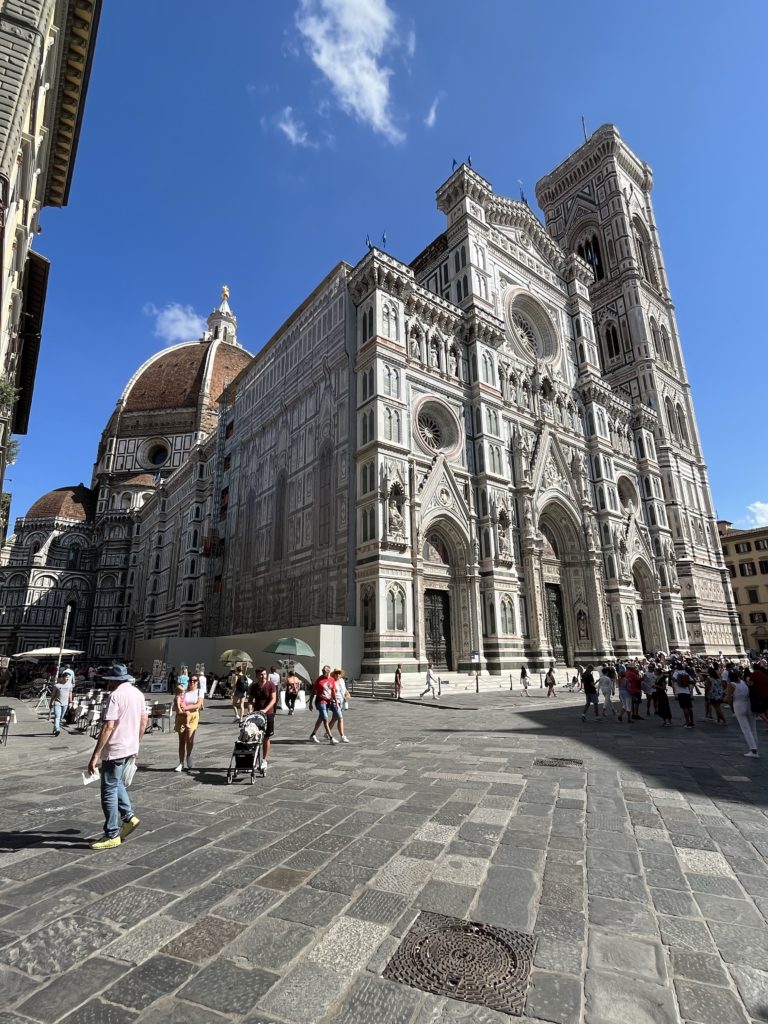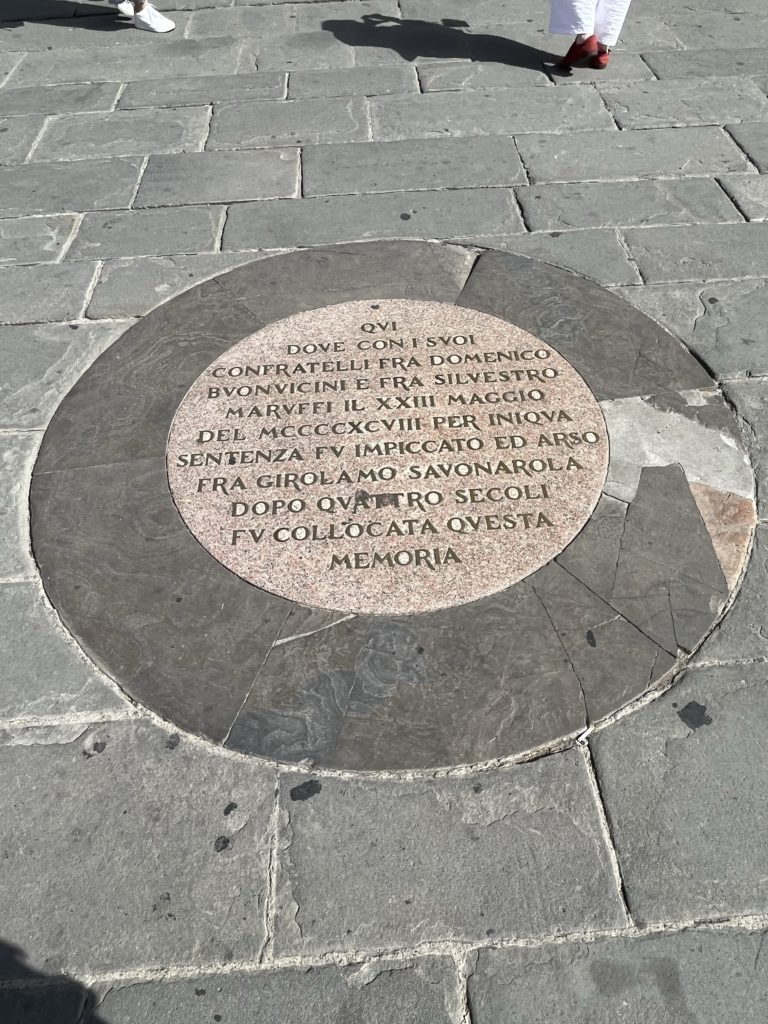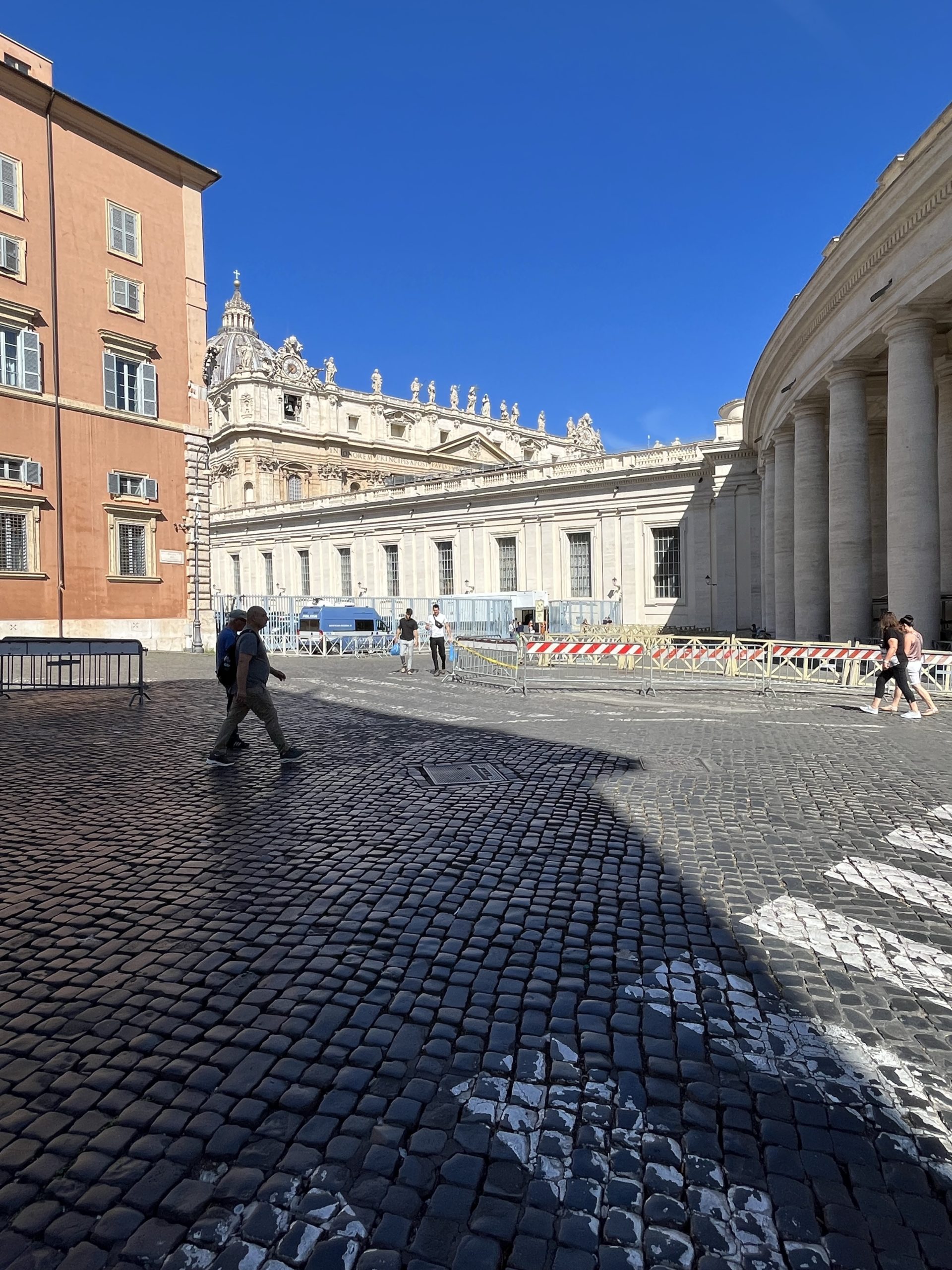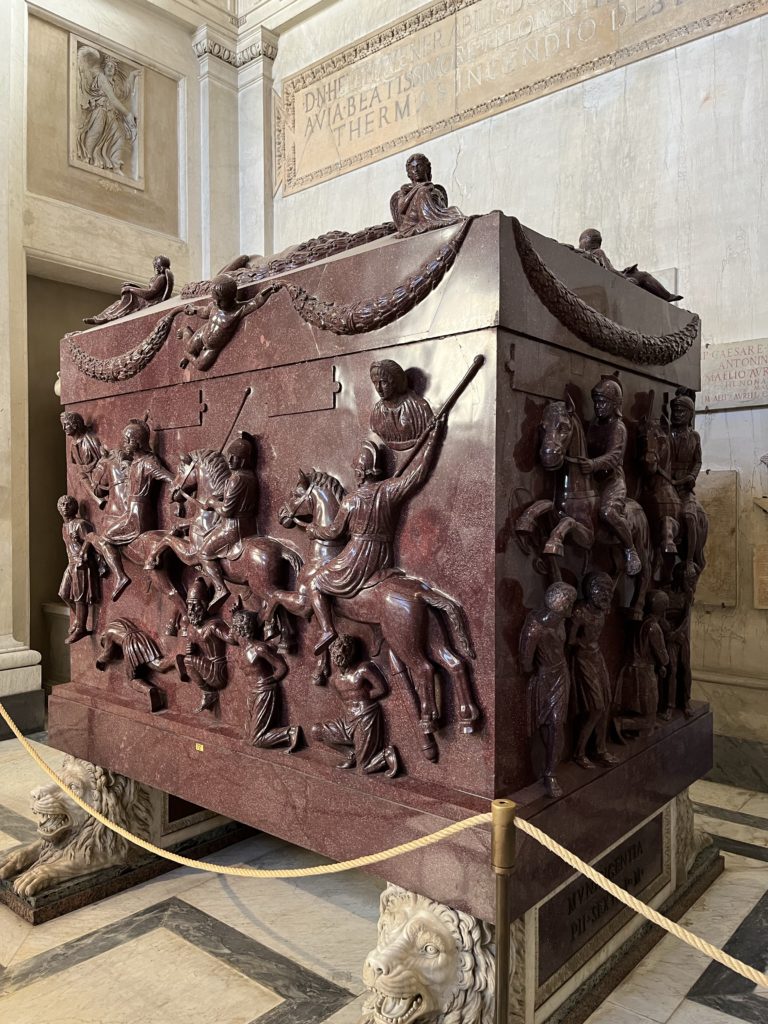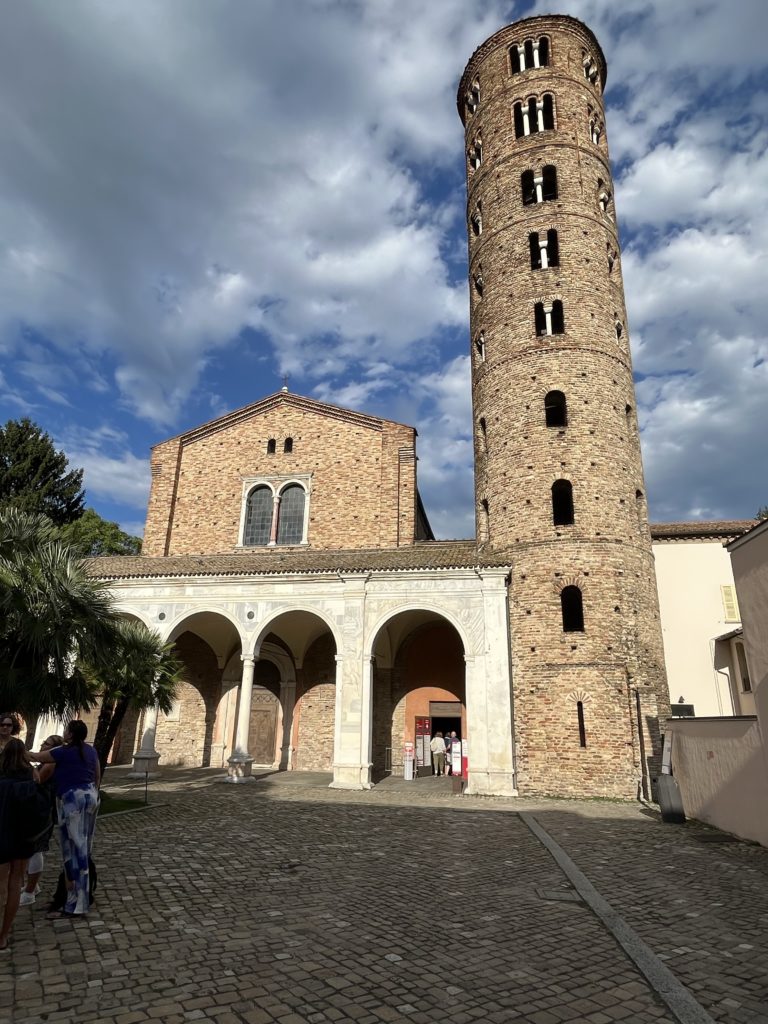
Today, we rented a car in Florence and drove to Ravenna. As we left Florence, I realized how much this place had grown on me. Florence is a walking city, and that suits me. Cars seem strangely out of place here on the cobblestone streets, unwelcome intruders that are given little attention by its citizens. People love Florence for its art, but its history rivals its art, particularly during the time of Savonarola. I do hope we are able to return in the future.
I should also mention that the practice of packing worn-out clothes and discarding them along the way has been both convenient and a spiritually refreshing hedge against materialism, and its better than self-flagellation or wearing a hairshirt. Other members of the GSB team have adopted the practice–discarding clothes not wearing hairshirts.
We arrived in Ravenna late in the afternoon but in enough time to see the Basilica of Saint Apollinare, Dantes tomb, and the Basilica of Saint Francesco (the church where Dante’s funeral was held).
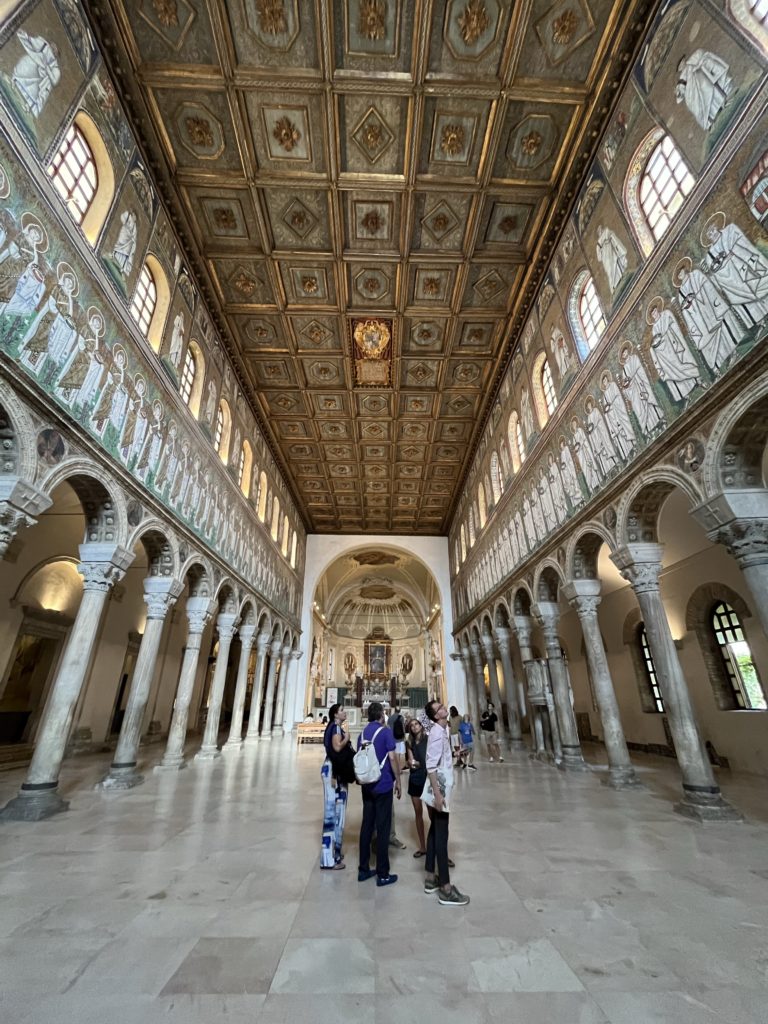
At the Basilica of Saint Apollinare, we were confronted with the same issue we will face tomorrow: the Arianism of Theodoric and the Arians who occupied Ravenna for nearly 50 years. The mosaics in the church are said to reflect the Arian view of Jesus; but I wonder if art historians are reading too much into the mosaic.
Continue reading “Early Christian, Medieval Travel Journal-Day 10”
